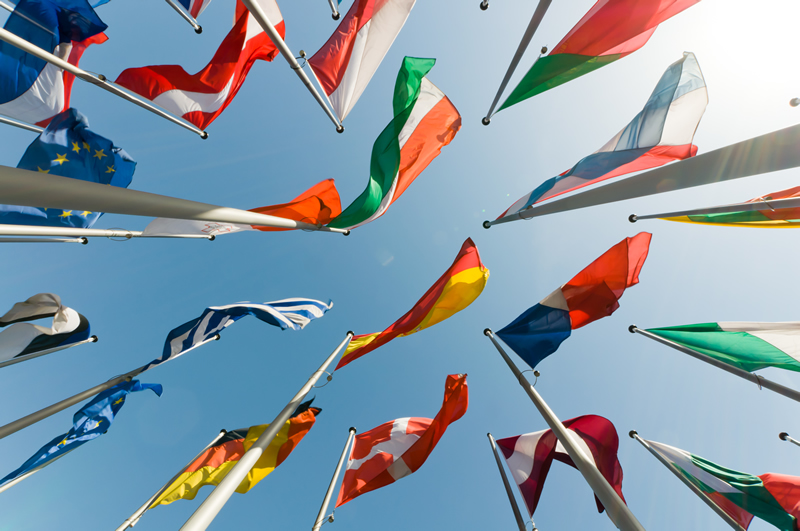ATD Blog
Diversity and Inclusion Through a Global Lens
Thu Apr 14 2016

Diversity and inclusion (D&I) continues to evolve in response to workplace and marketplace globalization, with implications for:
expanding the potential audience for D&I to include not only employees and suppliers, but also contingent workers, customers, and business partners
how work gets accomplished in matrixed, flatter, and more team-based global structures
global and local execution of D&I
how organizations foster collaboration.
As reported by McKinsey &. Company in "Getting More Value From your Global Footprint," the ability to link across functions, geographies, and divisions is a source of competitive advantage. New product ideas, addressing local buyers' needs, deepening government and community relationships, and building internal networks are benefits from greater linkage. D&I comes into play in a number of ways to promote collaboration, help organizations exhibit cross-cultural competence, and fully engage talent—wherever this is located.
How Diversity Is Defined
Diversity factors (such as race, ethnicity, age, disability, and so forth) vary greatly in prevalence and perceptions in different locations. All countries have diversity dimensions. For instance, even in seemingly homogenous areas, such as Japan, age and gender are major issues. In India and China, diverse language and dialects represent another dimension of diversity. While D&I is often defined within the United States and other western countries as understanding and appreciating differences and promoting "bringing our full selves to work," this concept does not always translate into other regions.
Gender is one aspect of diversity that is universal across all countries. Bringing more female representation into senior levels has rightfully moved to the top of the D&I agenda in many industrialized companies. But there is a long way to go in this regard. In the United States, women represent less than 5 percent of CEOs and less than 20 percent of seats on Board of Directors, but they are a full 45 percent of the American workforce, according to recent research from DDI and The Conference Board. Globally, the numbers are even more dismal; Fortune reports that with women represent less than 6 percent of board positions.
This slow progress on gender parity continues despite strong research on the financial benefits from having more female senior leaders. For example, data from Catalyst demonstrate that American companies with more women in senior positions have a higher return on equity.
However, 79 countries around the world restrict the kinds of work that women can perform, reports Forbes. In some parts of the world, obtaining an education, working outside of the home or simply being able to drive a car, is currently out of reach. To bring more women into the workplace in Pakistan, for example, often requires actively working with families to obtain their sponsorship for workplace participation. In Saudi Arabia, providing separate working facilities for women helps to overcome legal and cultural restrictions about male and female interaction. In India, providing safe transport to and from work can promote greater female participation in the workplace.
Take another example of global differences: LBGT rights. Attitudes have recently shifted dramatically, as highlighted by the legalization of same-sex marriage in nearly two dozen countries as of 2015 as reported by Pew Research. However, same-sex sexual activity is criminalized by 79 countries; in 10 of these nations, it is punishable by death, according to the 2014 Global Equality Report from the Human Rights Campaign.
D&I approaches, such as unconscious bias, which helps people understand their thinking patterns about others, has been widely advanced within the United States as a way to discuss complex and sensitive topics. This needs to be adapted to global differences.
Adapting D&I to Local Cultures and Requirements
Here are few considerations for effective customization of D&I efforts to local cultures.
What is the right balance between global consistency and local empowerment and buy-in?
What are the key objectives of the D&I strategy? Is this focused on attracting and retaining the best talent, mirroring the local communities, and/or business results and how is this best executed locally?
How can best practices in D&I be facilitated across geographies to promote ongoing learning and progress?
How can D&I best promote talent mobility across borders?
How much should the customs and laws of headquarters define what the approach should be globally?
To what degree should business and D&I leaders act as advocates for full equality of all, even when local laws prohibit this?
How can western countries become more sensitive and aware of how local cultural patterns shape the workplace?
Five Action Steps for Leveraging the Value of D&I Globally and Locally
In this fast-paced and VUCA (volatile, uncertain, complex, and ambiguous) world, approaches will continue to evolve to promote D&I globally. Being versatile and agile will help D&I practitioners to be as effective as possible. Here are some action steps:
Provide tools that enable all employees to build cultural fluency and be more inclusive. One example is GlobeSmart from Aperian Global; another tool is Cultural Navigator.
Assess your organization's global D&I progress against the Diversity Collegium Global Diversity and Inclusion Benchmarks.
Build inclusive practices into your global teams model, as discussed in my article "Four Drivers to Enhance Global Virtual Teams.”
Provide formal linkages with ERGs (Employee Resource Groups or networks) across geographies to share best practices and build cultural awareness.
Consider implementing a "federated" model, as discussed in "High Impact in a Globally Local World: Key Findings" from Bersin by Deloitte, in which "high impact local solutions" are delivered within a "coordination framework" for your D&I approaches:
With globalization as the new normal, it is critical for organizations to promote D&I across borders. To do so requires understanding and adaptation to changing demographics and workplace dynamics.
How does your organization address D&I globally and locally?
You've Reached ATD Member-only Content
Become an ATD member to continue
Already a member?Sign In
